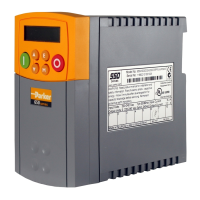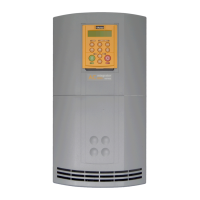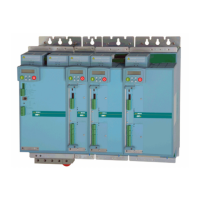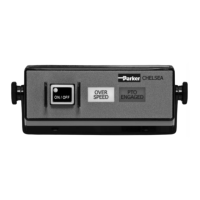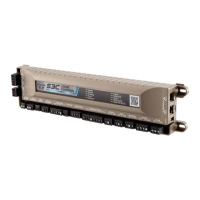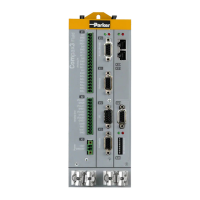Application Notes 11-1
650V AC Drive
Chapter 11 APPLICATION NOTES
Application advice is available through our Technical Support Department, who can also arrange
for on-site assistance if required. Refer to the back cover of this manual for the address of your
local Parker SSD Drives company.
• Always use gold flash relays, or others designed for low current operation (5mA), on all
control wiring.
• Remove all power factor correction equipment from the motor side of the drive before use.
• Avoid using motors with low efficiency and small cos ø (power factor) as they require a
larger kVA rated drive to produce the correct shaft kW.
Synchronous Motor Control
Although intended primarily for use with induction (asynchronous) motors, drives can also be
used for speed control of synchronous motors. Synchronous motors can offer economic
solutions in applications where tight control of speed is required together with the low
maintenance characteristics of an ac motor.
The two most common types of synchronous ac motor are permanent magnet and wound rotor.
In contrast to induction motors, synchronous motors run at synchronous speed whether on full
load or no load. Synchronous speed is set by the frequency of the supply applied to the stator.
The stator flux can be kept constant by keeping the stator volts/frequency ratio constant, as with
an induction motor.
Torque is produced in the motor by an increase in load angle between the stator and rotor fluxes.
Maximum torque occurs when the load angle approaches 90°. If the load angle exceeds this
value then torque drops and the motor will stall. Systems involving synchronous motors need
careful design to ensure that the motor can accelerate the load and handle transient load changes
without stalling.
Using Line Chokes
Line chokes are not required to limit input current to Parker SSD Drives drives. All 650V Frame
C-F drives are fitted with DC link chokes to limit the ripple current seen by the DC link
capacitors and thus prolong their life.
Line chokes may be used to reduce the harmonic content of the supply current where this is a
particular requirement of the application or where greater protection from mains borne transients
is required.
Using Output Contactors
The use of output contactors is permitted. It is recommended that this type of operation be
limited to emergency use only or in a system where the drive can be inhibited before closing or
opening this contactor.
Using Motor Chokes
Installations with motor cable runs in excess of 50m may suffer from nuisance overcurrent trips.
This is due to the capacitance of the cable causing current spikes to be drawn from the drive
output. A choke may be fitted in the drive output which limits the capacitive current. Screened
cable has a higher capacitance and may cause problems in shorter runs. The recommended
choke values are shown in Table 10.1.
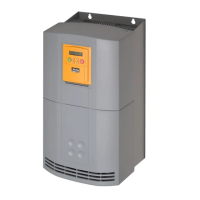
